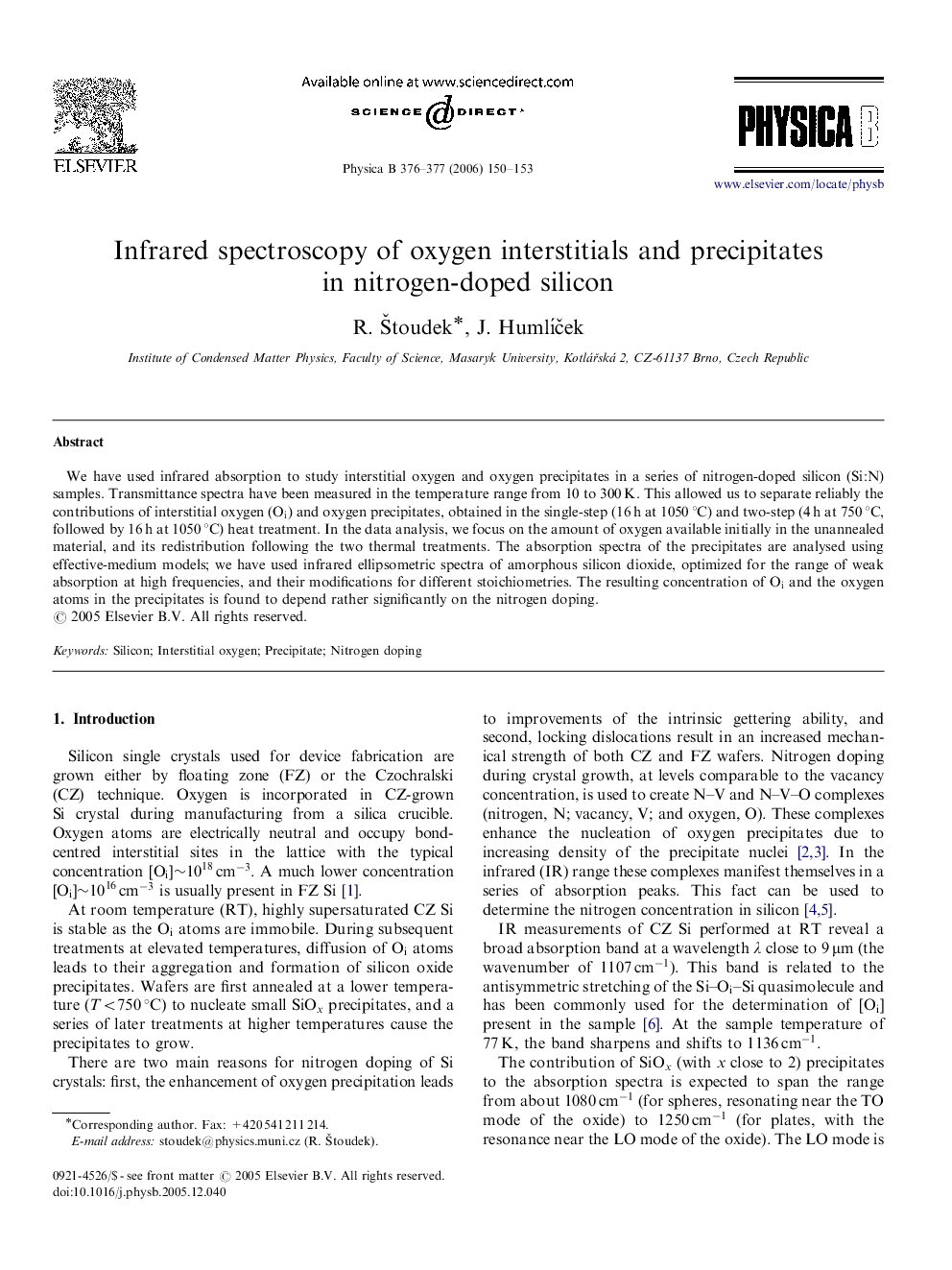| Article ID | Journal | Published Year | Pages | File Type |
|---|---|---|---|---|
| 1816671 | Physica B: Condensed Matter | 2006 | 4 Pages |
We have used infrared absorption to study interstitial oxygen and oxygen precipitates in a series of nitrogen-doped silicon (Si:N) samples. Transmittance spectra have been measured in the temperature range from 10 to 300 K. This allowed us to separate reliably the contributions of interstitial oxygen (Oi)(Oi) and oxygen precipitates, obtained in the single-step (16 h at 1050 °C) and two-step (4 h at 750 °C, followed by 16 h at 1050 °C) heat treatment. In the data analysis, we focus on the amount of oxygen available initially in the unannealed material, and its redistribution following the two thermal treatments. The absorption spectra of the precipitates are analysed using effective-medium models; we have used infrared ellipsometric spectra of amorphous silicon dioxide, optimized for the range of weak absorption at high frequencies, and their modifications for different stoichiometries. The resulting concentration of OiOi and the oxygen atoms in the precipitates is found to depend rather significantly on the nitrogen doping.
